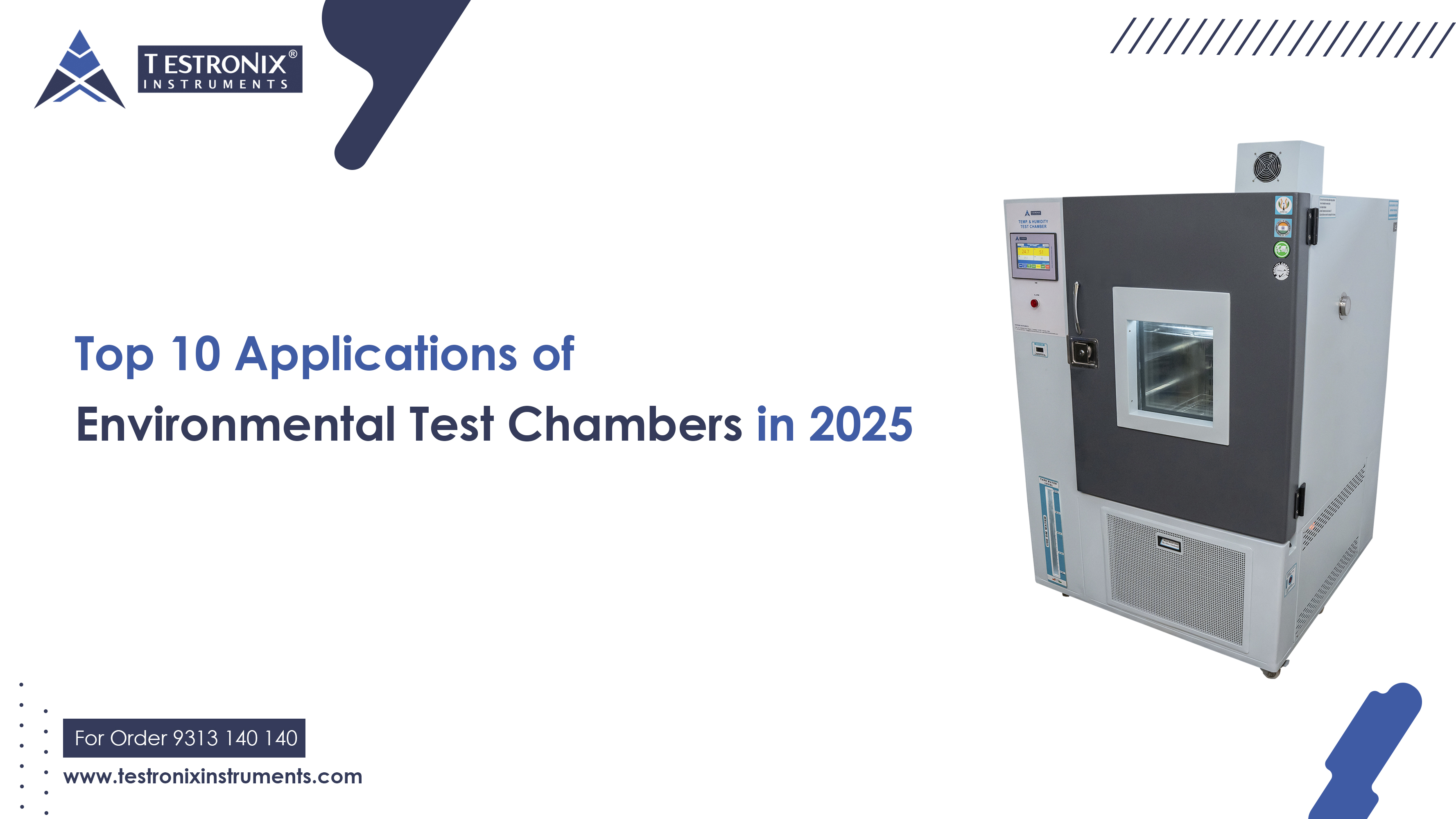Reviewed by Anurag Mishra (Sr. Technical Consultant)

In a world where product reliability, safety, and durability take priority, environmental test chambers are now integral to quality assurance. As technologies change and new industries develop, the necessity to replicate real-world environmental conditions has increased dramatically.
In 2025, environmental test chambers are more automated, intelligent, and flexible than ever, covering anything from electronics to aerospace and pharmaceuticals. This piece examines what environmental test chambers are and investigates their top 10 applications in today's industry.
An environmental test chamber is a controlled environment that meticulously replicates a wide variety of environmental conditions — ranging from extreme temperatures to different humidity levels. These sophisticated chambers serve as essential tools for manufacturers and researchers, enabling them to conduct rigorous tests on how products, materials, or components endure specific environmental challenges.
Artificial conditions are carefully constructed to mirror the stresses that machinery and materials might face in the real world. Here, the relentless cycles of heat and cold, the dampness of high humidity, and other factors come together to simulate a myriad of scenarios.
This enables accelerated testing of environmental exposure, revealing how items may react under circumstances that are not routinely encountered in everyday situations. The result is a deeper understanding of durability and performance, ensuring that products can thrive even in the harshest conditions.
Types of environmental conditions commonly simulated include:
Environmental test chambers are essential devices used in multiple industries to replicate environmental conditions and evaluate product durability and efficiency. Here are some major applications explained for the environmental test chamber:
With the rise of electric vehicles (EVs), autonomous driving technologies, and advanced driver-assistance systems, the automotive sector heavily depends on test chambers to reproduce extreme heat, cold, and vibration. The durability of batteries, electronic sensor performance, and climate control systems are often put to the test for real-world reliability.
Aerospace parts in 2025 must withstand severe environments such as high altitude, vacuum pressure, and extreme temperature fluctuations. Environmental chambers simulate these conditions to test avionics, missile components, and satellite equipment for mission-critical reliability.
Cellphones, printed circuits, microprocessors, and sensors are exposed to thermal cycling, humidity, and dust in order to maintain their performance across various operating conditions. As miniaturization progresses, thermal stability and moisture resistance become increasingly vital.
Solar panels, components of wind turbines, and energy storage systems are subjected to rigorous testing that includes weather simulation, ultraviolet (UV) exposure, and corrosion assessments. These assessments are designed to replicate real-world environmental conditions, allowing manufacturers to evaluate how their products perform under varying climates, including extreme heat, heavy rain, and strong winds.
Environmental chambers play a critical role in pharmaceutical stability testing, particularly for vaccines and biologics. They also validate the shelf life and performance of medical devices at different temperatures and humidities to ensure patient safety. It regulates product consistency and effectiveness throughout storage, transportation, and end-use conditions, thereby supporting public health and global distribution efforts.
In a world where technology seamlessly integrates into our daily lives, consumer devices like VR headsets and smartwatches are designed not just for functionality but for resilience. These advanced gadgets must endure unexpected mishaps, extreme temperatures, and the challenges posed by moisture. To ensure they live up to these rigorous demands, environmental test chambers simulate a range of conditions, meticulously evaluating their wearability and durability.
To provide structural durability and long-term performance, materials such as insulation, sealants, paint, and plastics undergo rigorous testing for their ability to resist UV radiation, temperature changes, water penetration, and long-term environmental degradation.
Environmental testing ensures shelf life, packaging integrity, and refrigeration reliability by simulating real-world conditions. Test chambers replicate temperature fluctuations, humidity, and handling stress during storage and transportation to maintain consistent food safety, freshness, and quality throughout the supply chain.
Universities, start-ups, and R&D centers use environmental test chambers to develop material innovation, perform performance benchmarking, and optimize product prototypes. This enables instant advancements in such areas as nanotechnology, sustainable materials, biomedical devices, and future-generation IoT solutions through accurate simulation of actual environments.
5G and edge computing equipment demand very ruggedized hardware with the ability to work under hostile conditions. Environmental test chambers analyze the base stations, routers, and antennas for resistance against temperature variation, exposure to wind, humidity, and other unfriendly outdoor environments for faultless network operation and zero downtime.
With rising product expectations and increasingly sophisticated technologies, environmental test chambers continue to be a necessary tool in all industries. By 2025, their contribution will go far beyond quality assurance, these chambers are the drivers of innovation, regulation, and consumer confidence.
From making electric vehicles safer, preserving the life of solar panels, to maintaining medical device sterility, these test chambers bridge the gap between lab performance and field performance.